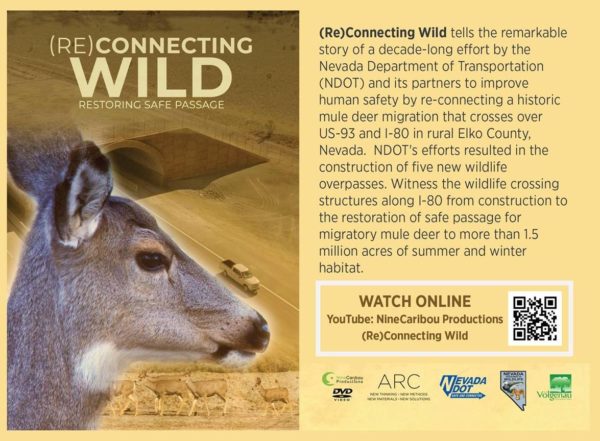News & Events (Pending)
Summer 2020 Newsletter
Increased Speeding Violations in Nevada During Pandemic
The National Highway Traffic Safety Administration (NHTSA) estimates that 36,120 people were killed on US roadways in 2019, a 1.2% decrease from 2018. This marks the third consecutive year that the number of total fatalities has decreased. In 2019, 284 people were killed on Nevada roadways, a decrease from 329 fatalities in 2018. While this decrease is good news, even one life lost on Nevada’s roadways is too many.
During the COVID-19 pandemic, the Nevada Highway Patrol (NHP) has observed a growing number of speeding violations. Trooper Hannah DeGooey, Public Information Officer for NHP, reported 196 drivers cited for speeding between February and May, compared to 223 drivers cited during the same time frame last year. These numbers may seem similar, but in 2019, the state was not experiencing a pandemic and experienced 70% more traffic. This means a larger percentage of drivers on the road during this time period in 2020 were speeding.
Las Vegas Metro Police Department Lieutenant Bret Ficklin stated that the Department responded to six fatal collisions since the shutdown—four of which were speed-related.
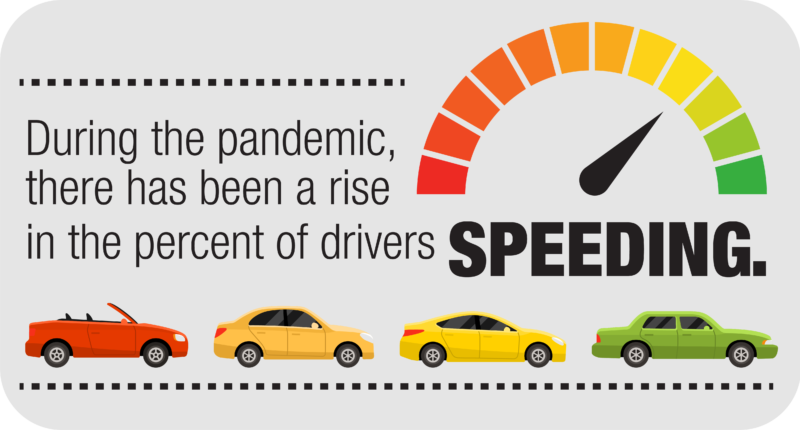
NHTSA Reminds Drivers This Fourth of July that Buzzed Driving is Drunk Driving
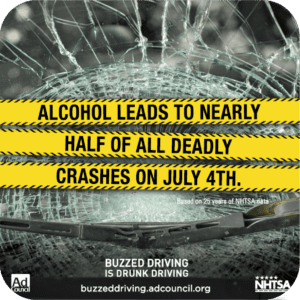 The National Highway Traffic Safety Administration (NHTSA) ran a campaign for the Fourth of July holiday weekend to remind drivers that buzzed driving is drunk driving. The campaign, in both English and Spanish, stipulates that the Fourth of July holiday consistently has the highest number of alcohol-impaired crash fatalities each year, and seeks to educate drivers on the dangers of impaired driving.
The National Highway Traffic Safety Administration (NHTSA) ran a campaign for the Fourth of July holiday weekend to remind drivers that buzzed driving is drunk driving. The campaign, in both English and Spanish, stipulates that the Fourth of July holiday consistently has the highest number of alcohol-impaired crash fatalities each year, and seeks to educate drivers on the dangers of impaired driving.
The campaign’s objectives include:
- Educate drivers on the impacts of driving under the influence of alcohol and drugs
- Remind drivers of the consequences that come from driving under the influence
- Motivate drivers to not drive under the influence of alcohol or drugs
The Las Vegas Coalition for Zero Fatalities facilitated monetary incentives by funding $2 discounts for every Lyft customer who used the code LVCZFJULY4 from midnight Saturday July 4th to noon Sunday July 5th.
Traffic safety expert Andrew Bennett noted that as businesses have begun to reopen, Nevada roads are once again swamped. In his opinion, he said, Las Vegas motorists have forgotten how to drive, and he has recently seen more aggressive and less patient driving habits.
The Case for Primary Seat Belt Laws
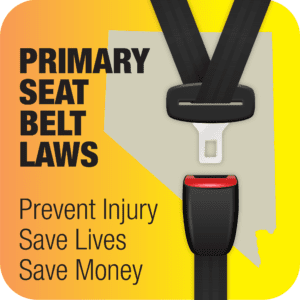 The University of Nevada, Las Vegas (UNLV) recently published an in-depth analysis of Nevada’s linked crash-trauma database in the latest volume of their Traffic Research and Education Newsletter (TREND). The database compares motor vehicle crash and hospital outcomes for Nevada trauma center patients by seat belt use status. Their analysis found that seat belt usage is associated with a much lower risk of death, disability, or hospital/ICU stay—also affecting the length, and therefore cost, of stay.
The University of Nevada, Las Vegas (UNLV) recently published an in-depth analysis of Nevada’s linked crash-trauma database in the latest volume of their Traffic Research and Education Newsletter (TREND). The database compares motor vehicle crash and hospital outcomes for Nevada trauma center patients by seat belt use status. Their analysis found that seat belt usage is associated with a much lower risk of death, disability, or hospital/ICU stay—also affecting the length, and therefore cost, of stay.
The data in their analysis showed that trauma outcomes for occupants wearing a seatbelt were less severe than those that were not. Unbelted occupants also experienced more significant injuries to almost every part of the body. This is also means that unbelted occupants experienced longer hospital stays, leading to more expensive hospital bills. Unbelted occupants also more frequently died from their injuries or required treatment at a rehabilitation facility.
What can we do to increase seat belt use? The UNLV research demonstrates that primary seat belt laws increase seat belt use. Centers for Disease Control and Prevention (CDC) calculations indicate that passing a primary seat belt law in Nevada could save 13 lives, prevent 1,206 injuries, and save $48M annually (CDC, 2015).
Nevada Made Significant Progress Towards Safety Performance Targets
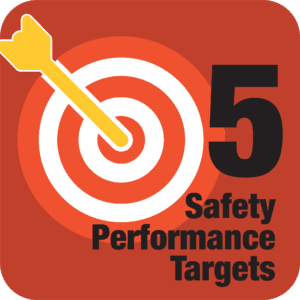 The Federal Highway Administration’s (FHWA’s) Safety Performance Management (Safety PM) is part of a strategic approach that uses system information to make investment and policy decisions to achieve national performance goals.
The Federal Highway Administration’s (FHWA’s) Safety Performance Management (Safety PM) is part of a strategic approach that uses system information to make investment and policy decisions to achieve national performance goals.
Performance management is a critical element in roadway safety and is measured by the number of lives lost and serious injuries sustained on Nevada’s roadways. Safety performance targets will help improve data, foster transparency and accountability, and allow safety progress to be tracked at the national and state levels. The Safety PM framework is used to assist in making progress toward improving road safety through the Highway Safety Improvement Program (HSIP), which requires a data-driven, strategic approach to improving highway safety through performance.
The Safety PM Final Rule establishes safety performance measure requirements for the purpose of carrying out the HSIP and to assess fatalities and serious injuries on all public roads. The five performance measures as five-year rolling averages include:
- Number of Fatalities
- Rate of Fatalities per 100 million Vehicle Miles Traveled (VMT)
- Number of Serious Injuries
- Rate of Serious Injuries per 100 million VMT
- Number of Non-motorized Fatalities and Non-motorized Serious Injuries
The Safety PM Final Rule also establishes the process for state departments of transportation (DOTs) and metropolitan planning organizations (MPOs) to establish and report their safety targets, and the process that FHWA will use to assess whether state DOTs have met or made significant progress toward meeting their safety targets. FHWA will determine whether a state has met or made significant progress toward its safety performance targets at the end of the following calendar year when target-year data is available and findings are reported to states and the public. As of April 24, 2020, the FHWA has determined that Nevada has met or made significant progress towards achieving its safety performance targets.
The table below provides a summary of the target achievement determination.
| Performance Measure | 2014-2018 Target | 2014-2018 Outcome | 2012-2016 Baseline | Met Target? | Met or Made Significant Progress? |
|---|---|---|---|---|---|
| Number of Fatalities | 333.0 | 317.4 | 294.6 | Yes | Yes |
| Rate of Fatalities | 1.250 | 1.188 | 1.160 | Yes | Yes |
| Number of Serious Injuries | 1,883.0 | 1,153.2 | 1,145.2 | Yes | Yes |
| Rate of Serious Injuries | 4.890 | 4.310 | 4.516 | Yes | Yes |
| Number of Non-Motorized Fatalities and Serious Injuries | 300.0 | 292.6 | 276.0 | Yes | Yes |

